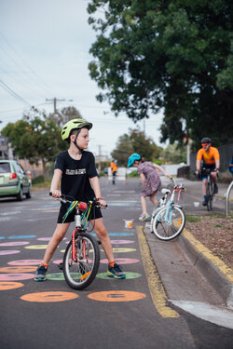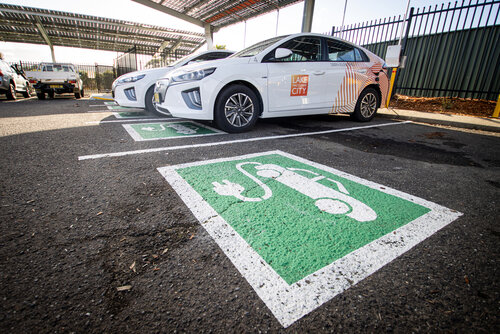The ACT has topped the Climate Council’s clean transport scorecard, and along with Tasmania, is leading the national race to decarbonise transport.

The scorecard is based on an analysis of each state and territory’s transport profile, as well as policies and plans.
It also tracks transport emissions and rates each state and territory on a variety of metrics including public transport, walking and cycling, and uptake of electric fleets.
The Climate Council says the ACT was in front on many markers, resulting in its number one ranking, followed by runner up NSW.
Tasmania is also recognised in the councils’s report, Are we there yet? Clean Transport Scorecard for Australian States and Territories, for reducing its overall transport emissions by 18 per cent over the last ten years, with the ACT achieving a seven per cent reduction.
The ACT and Tasmania also recorded the lowest transport emissions on a per person basis.
South Australia cut transport emissions by five per cent and Victoria managed a small one per cent decline. All other states and territories added to rising transport emissions.
Climate Council clean transport overall rankings
1. ACT (Clean All-Rounder award)

2. NSW (Public Transport Powerhouse award)
3. Equal third place – TAS (Emissions Slasher award) and VIC (People Powered award)
5. SA (Charging Ahead award)
6. QLD (Fleet Footed award)
7. WA (High Hurdler award)
8. NT (Active Mover award)
NSW, NT, Victoria and WA got a bouquet for public transport; Queensland for strides in electrifying the government fleet and SA for EV charging infrastructure.
NSW and Queensland got a ‘could do better’ for lagging on EV chargers and Victoria for lagging on government electric vehicle fleet targets. Tasmania and SA were slow on public transport uptake.
Queensland, Western Australia and the Northern Territory had the most work to do to find zero emission transport solutions across their vast distances, the Climate Council said.
Case studies
The report also contains case studies of local and international clean transport initiatives.
The inner northern Melbourne of Merri-Bek is described as Victoria’s “poster child for bike-friendly, family-friendly open streets” for its efforts to boost uptake of sustainable transport via shared zones where pedestrians and cyclists have right of way over cars.
It’s also aiming for sustainable school trips.

“We’re aiming for 80 per cent of all trips to school to be made by sustainable forms of transport by 2030,” Mayor Mark Riley says.
We’re encouraging this through our Ride & Stride program, where we are opening the streets outside some schools to walking, riding and play without car traffic during pick up and drop off times.”
Lake Macquarie in NSW, meanwhile, features for its electric vehicle rollout, with Council transitioning its passenger vehicle fleet to hybrid vehicles.
It currently has nine Battery Electric Vehicles and has transitioned 75 passenger vehicles from petrol or diesel to hybrids in its fleet.
Support for investment in public transport
A national poll released by the Climate Council earlier this year found that 80 per cent of Australians think governments should invest more in public transport, and almost three quarters are keen to see Australia’s entire bus fleet running on renewables.
“There has been a lot of focus on electric vehicles recently, but we won’t achieve our climate targets or address broader challenges within the transport sector purely by replacing dirty petrol cars with electric ones,” Climate Councillor Greg Bourne said.
“Investment in clean public transport and making our towns and cities pedestrian and bicycle-friendly must also be part of the solution.”
For transport to reach near absolute zero emissions by 2035, all states and territories need to transition to fully electric public transport by 2035 or earlier, the report says.





Leave a Reply